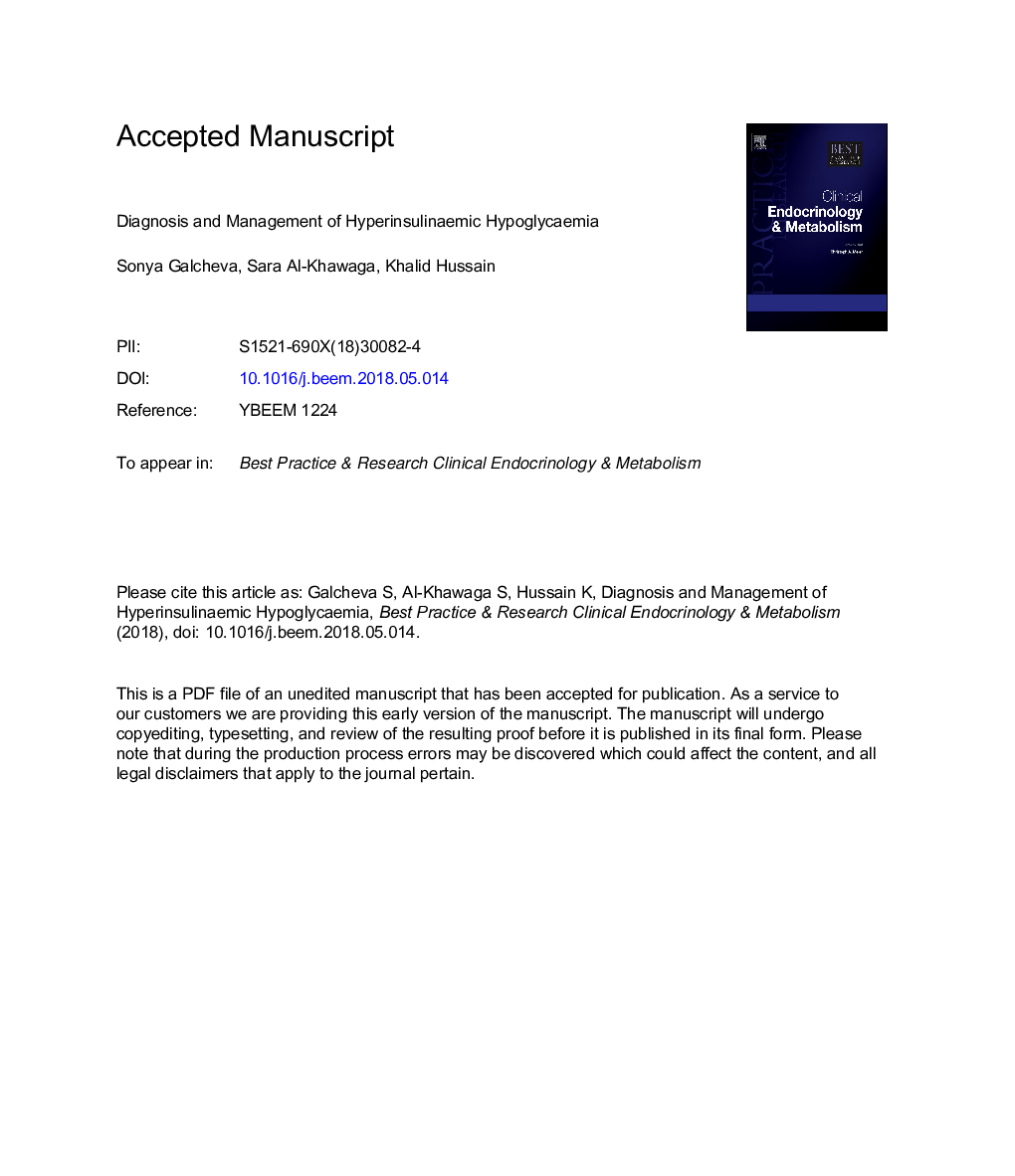| Article ID | Journal | Published Year | Pages | File Type |
|---|---|---|---|---|
| 8627291 | Best Practice & Research Clinical Endocrinology & Metabolism | 2018 | 57 Pages |
Abstract
Hyperinsulinaemic hypoglycaemia (HH) is a heterogeneous condition with dysregulated insulin secretion which persists in the presence of low blood glucose levels. It is the most common cause of severe and persistent hypoglycaemia in neonates and children. Recent advances in genetics have linked congenital HH to mutations in 14 different genes that play a key role in regulating insulin secretion (ABCC8, KCNJ11, GLUD1, GCK, HADH, SLC16A1, UCP2, HNF4A, HNF1A, HK1, PGM1, PPM2, CACNA1D, FOXA2). Histologically, congenital HH can be divided into 3 types: diffuse, focal and atypical. Due to the biochemical basis of this condition, it is essential to diagnose and treat HH promptly in order to avoid the irreversible hypoglycaemic brain damage. Recent advances in the field of HH include new rapid molecular genetic testing, novel imaging methods (18F-DOPA PET/CT), novel medical therapy (long-acting octreotide formulations, mTOR inhibitors, GLP-1 receptor antagonists) and surgical approach (laparoscopic surgery). The review article summarizes the current diagnostic methods and management strategies for HH in children.
Related Topics
Life Sciences
Biochemistry, Genetics and Molecular Biology
Endocrinology
Authors
Sonya (Consultant in Paediatric Endocrinology), Sara (Post-doctoral Fellow), Khalid (Professor of Pediatrics),
